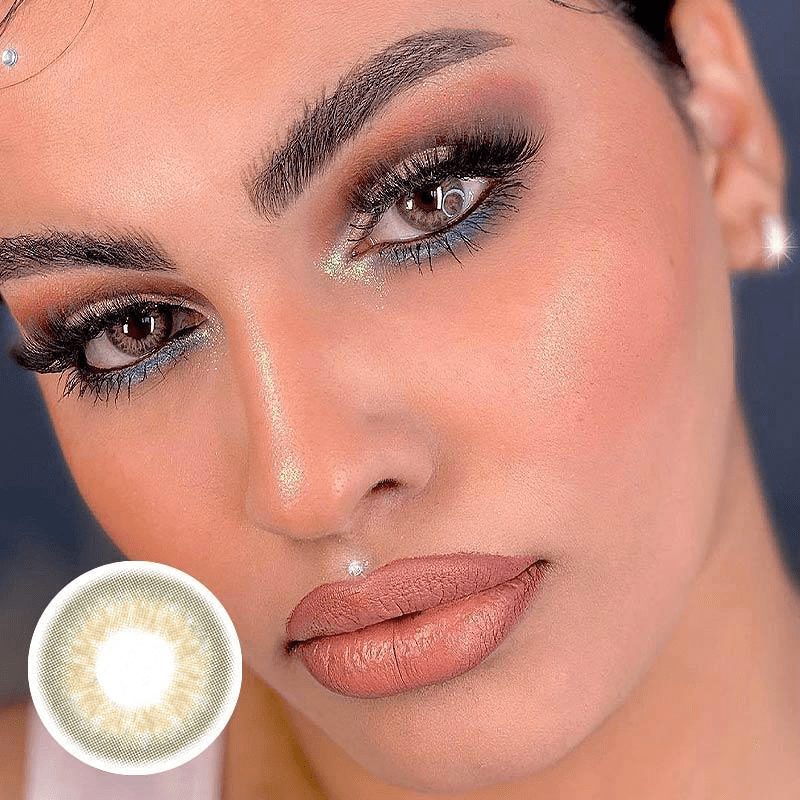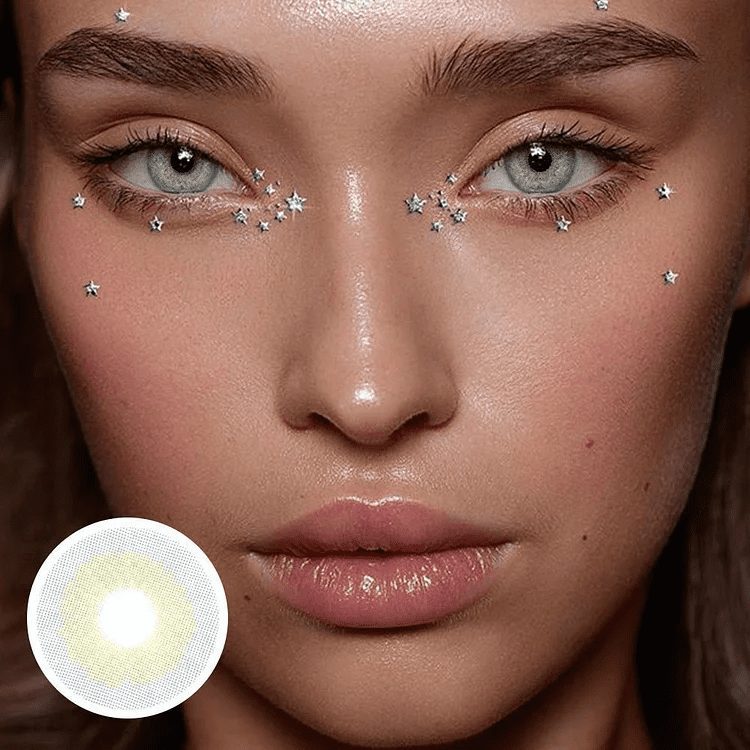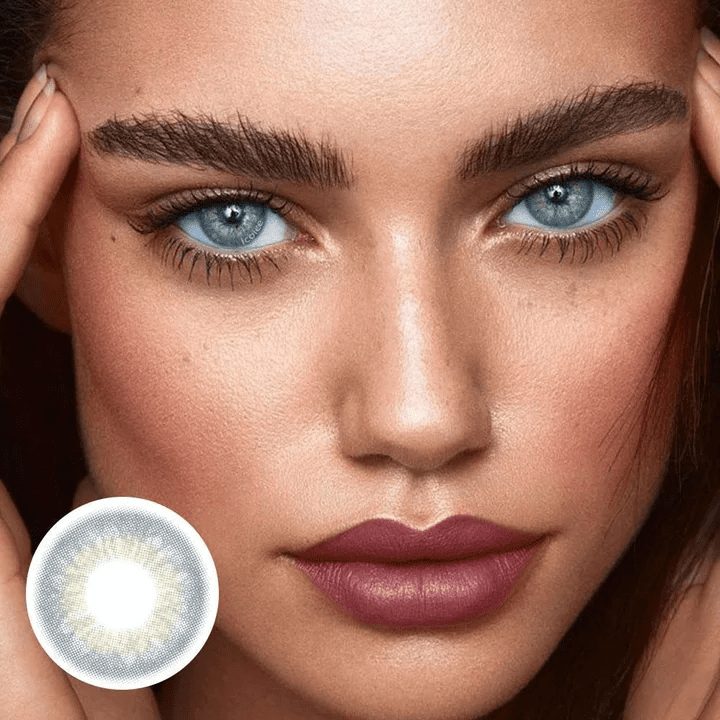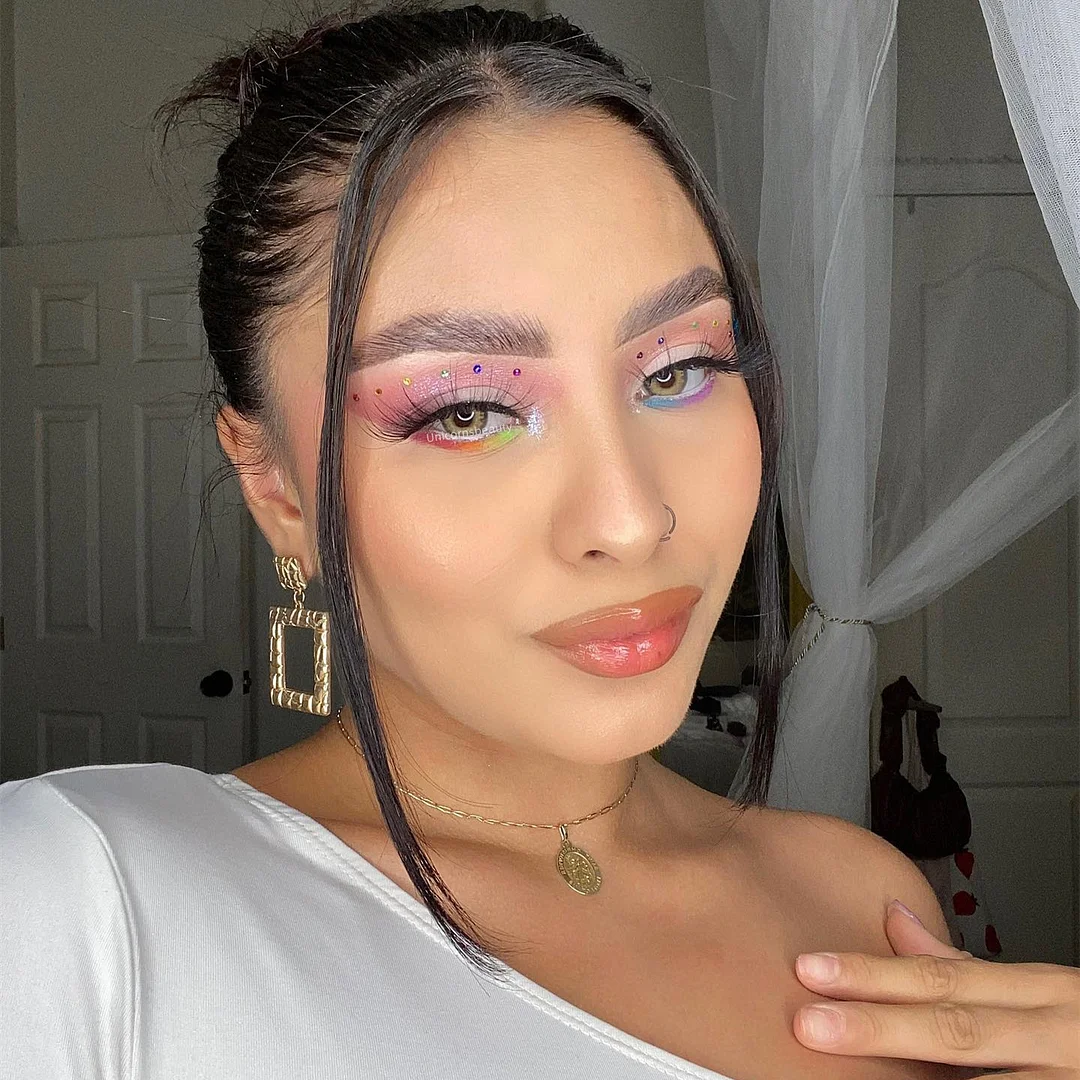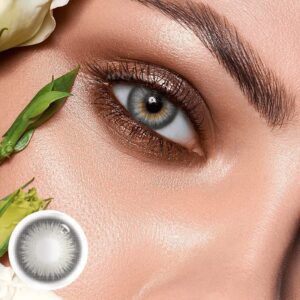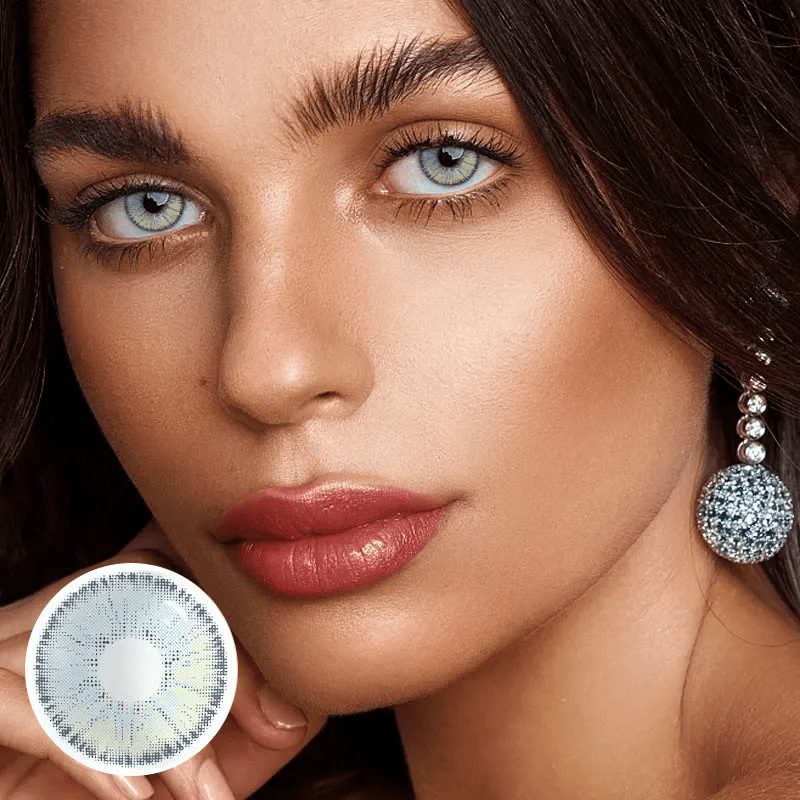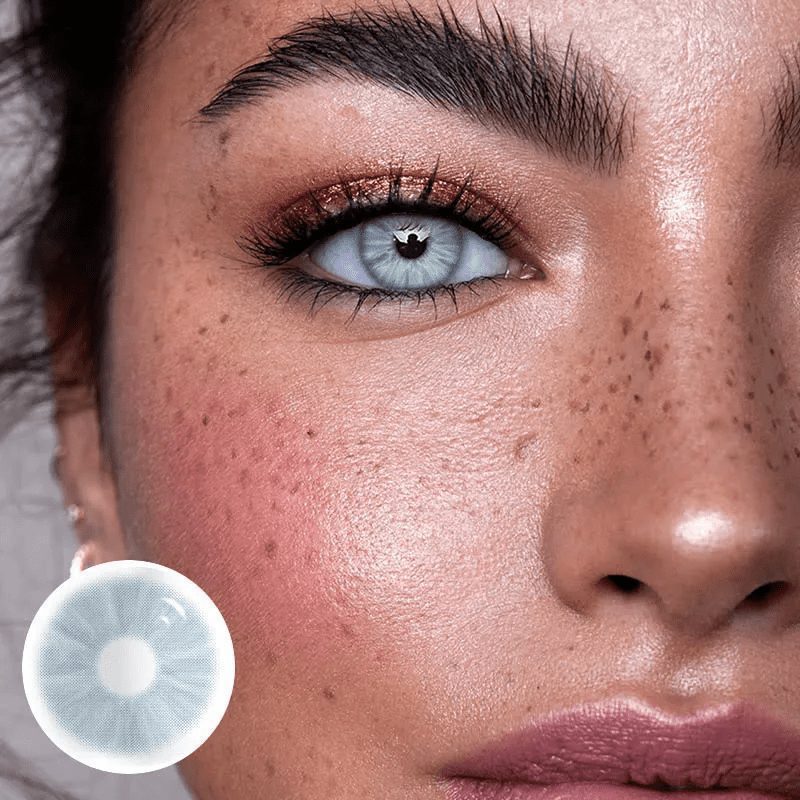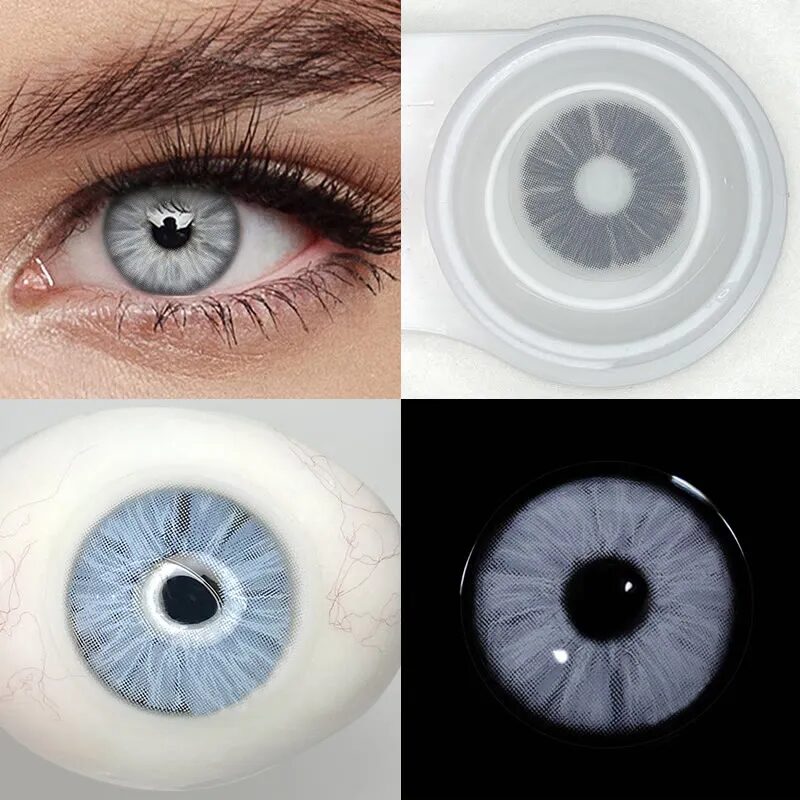
اعتبارات أمنية عند ارتداء العدسات اللاصقة الملونة
تم نشره بواسطة
إيمي@يونيكورن بيوتي
التعليقات على Security Considerations For Wearing Colored Contact Lenses مغلقة
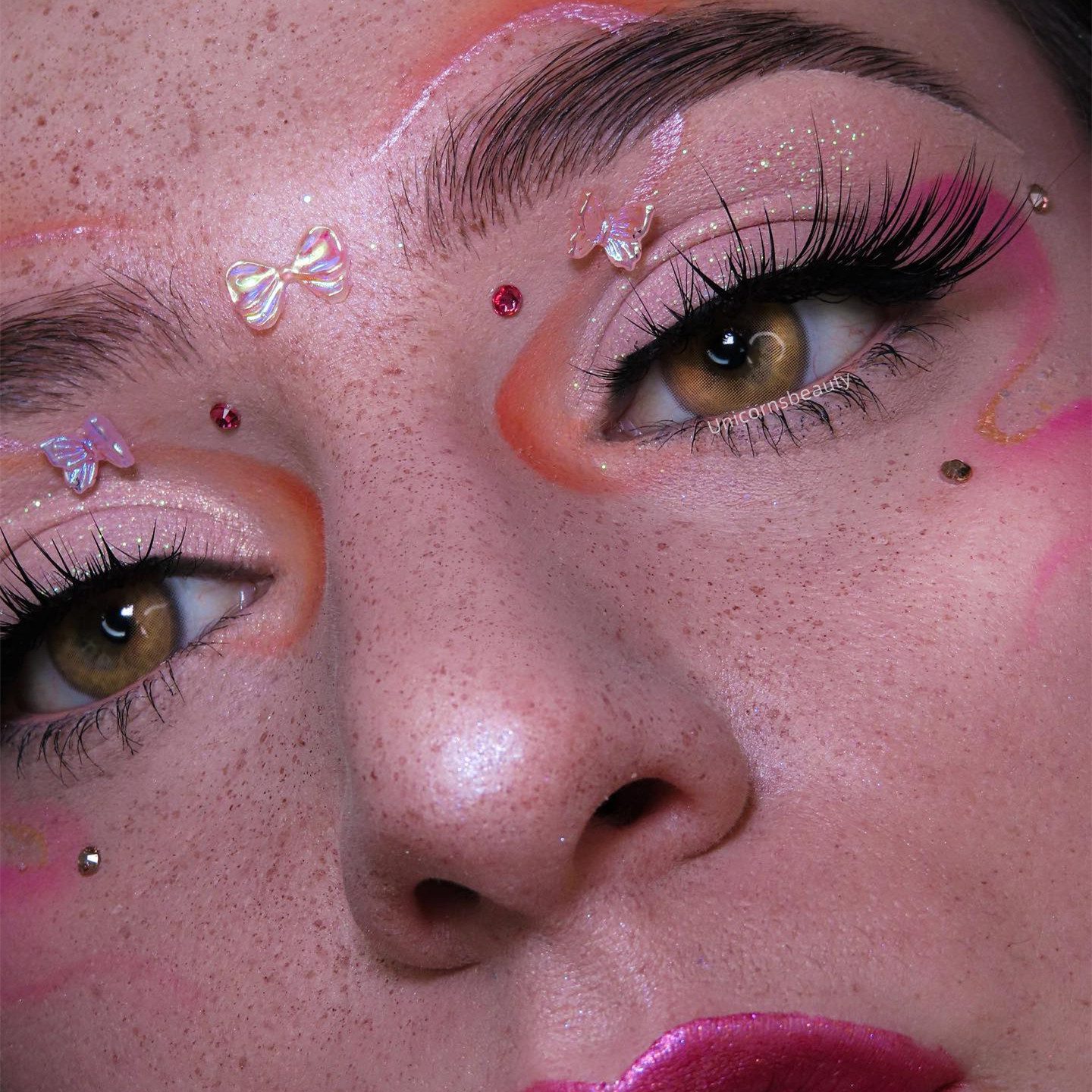
يمكن أن يكون ارتداء العدسات اللاصقة الملونة طريقة ممتعة لتغيير لون عينيك أو تحسين زيك التنكري للمناسبات الخاصة مثل الهالوين أو الأزياء التنكرية. ومع ذلك، من المهم مراعاة العديد من عوامل الأمان والسلامة عند استخدام هذه العدسات لحماية صحة عينيك وسلامتك بشكل عام. فيما يلي بعض الأسئلة الشائعة حول العدسات اللاصقة الملونة التي يجب أن تكون فضولياً بشأنها.
جدول المحتويات
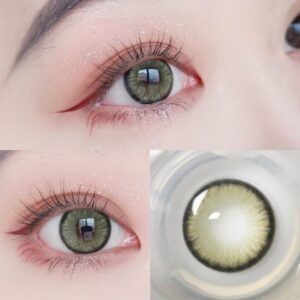
يمكن نحن والأذن جعلى اتصال لحواس إذا كنا Hأن اللابؤرية؟
اللابؤرية هي حالة بصرية شائعة تحدث عندما يكون لقرنية أو عدسة العين شكل غير منتظم. فبدلاً من أن تكون كروية الشكل تماماً، يكون لها شكل أكثر استطالة، مما يتسبب في تركيز الضوء على نقاط متعددة على شبكية العين، مما يؤدي إلى رؤية ضبابية أو مشوهة على المسافات القريبة والبعيدة.
أنواع العدسات اللابؤرية اللابؤرية:
- العدسات اللاصقة الحيدية: تم تصميم العدسات الحيدية خصيصاً للأشخاص الذين يعانون من اللابؤرية. وهي تحتوي على خطوط طول مختلفة (انحناء) في العدسة لتصحيح التركيز غير المتساوي للضوء على شبكية العين. تتوفر العدسات الحيدية في كل من المواد اللينة والصلبة المنفذة للغازات (RGP).
- العدسات الصلبة القابلة للنفاذ بالغاز (RGP): يمكن أن توفر عدسات RGP تصحيحًا ممتازًا للاستجماتيزم لأنها تحافظ على شكلها على العين، مما يوفر رؤية واضحة وثابتة. قد يجد بعض الأشخاص المصابين بالاستجماتيزم أن عدسات RGP أكثر راحة وفعالية.
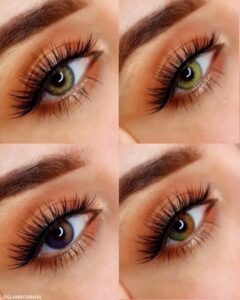
في الماضي، كان على الأشخاص الذين يعانون من اللابؤرية استخدام العدسات اللاصقة الصلبة المنفذة للغازات لأنها تحافظ على شكلها بشكل أفضل على العين. ومع ذلك، قد يكون التكيف مع الإحساس بهذه العدسات أمراً صعباً. واليوم، توجد عدسات لاصقة لينة مصممة خصيصاً لتصحيح الاستجماتيزم وتوفير الراحة.
العدسات اللاصقة الحيدية عبارة عن عدسات لاصقة لينة تعمل على انكسار الضوء في اتجاه معين لتصحيح اللابؤرية (الاستجماتيزم) وتوفر الراحة المثلى. هذه العدسات مصممة بشكل فريد لتبقى في مكانها على العين، مما يضمن تصحيح الاستجماتيزم بشكل فعال. ولتحقيق ذلك، يتم ترجيح العدسات الحيدية من الأسفل. هناك مجموعة واسعة من العدسات اللاصقة الحيدية المتاحة، بما في ذلك العديد من العلامات التجارية والخيارات للارتداء اليومي أو الممتد. على سبيل المثال، يمكن ارتداء عدسات Unicornsbeauty اللاصقة الحيدية بشكل مستمر لمدة تصل إلى سبعة أيام مع الحفاظ على رؤية واضحة وتوفير أقصى قدر من الراحة لعينيك.
بالنسبة لحالات الاستجماتيزم الأكثر شدة، قد يقترح طبيب العيون استخدام العدسات اللاصقة الصلبة بدلاً من العدسات الحيدية اللينة. قد تواجه العدسات اللينة صعوبة في البقاء في الموضع الصحيح لتصحيح اللابؤرية لدى الأفراد الذين يعانون من حالات شديدة. تصحح العدسات الصلبة الاستجماتيزم من خلال توفير سطح كروي على العين. تُصنع هذه العدسات من مادة بلاستيكية متينة وقابلة للنفاذ، مما يسمح للأكسجين بالتدفق عبر العدسة.
يوصي الأطباء بالعدسات اللاصقة الصلبة نظراً لصلابتها الأكبر مقارنة بالعدسات اللينة. صلابة هذه العدسات تسمح لها بالحفاظ على شكلها بشكل أفضل، مما يؤدي إلى تحسين الرؤية مقارنة بالعدسات الحيدية اللينة. وبالإضافة إلى ذلك، فإن المواد المختلفة المستخدمة في العدسات الصلبة تجعلها أسهل في التنظيف وأطول عمراً من العدسات اللينة. ومع ذلك، على الرغم من اسمها، قد لا تكون العدسات الصلبة مريحة دائماً مثل العدسات اللينة.
أُوكَازيُون
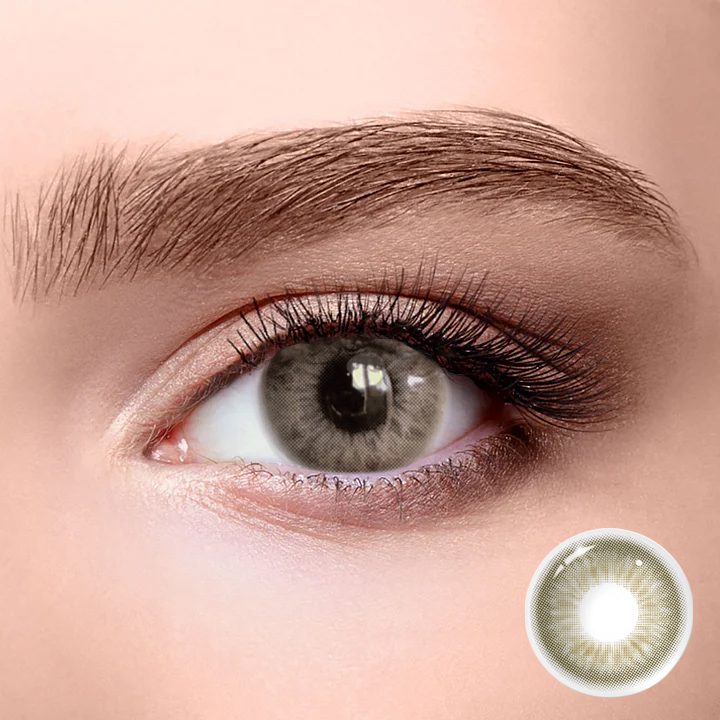
تحديد أحد الخيارات
هناك العديد من الأشكال المختلفة لهذا المنتج. يمكن اختيار الخيارات على صفحة المنتج
أُوكَازيُون
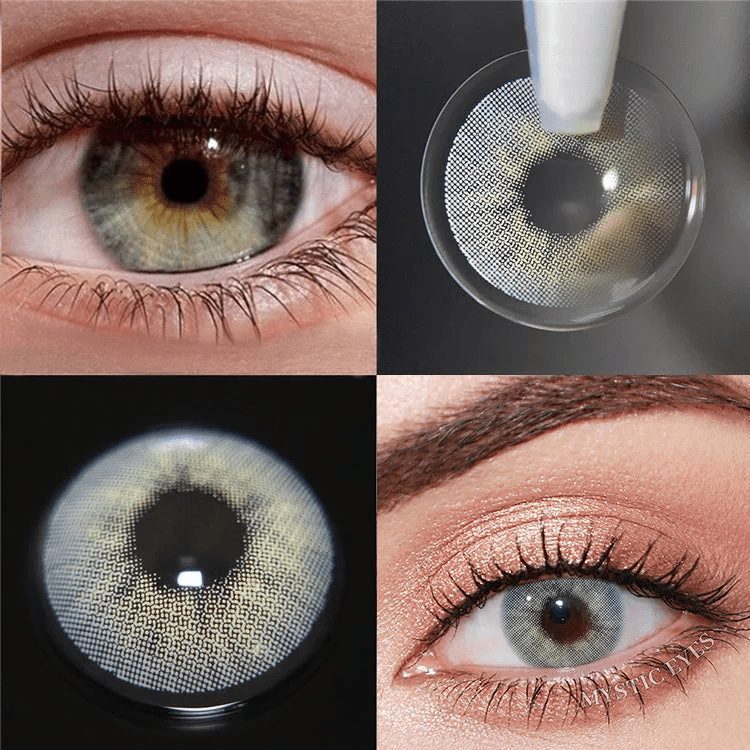
تحديد أحد الخيارات
هناك العديد من الأشكال المختلفة لهذا المنتج. يمكن اختيار الخيارات على صفحة المنتج
أزرق أكوا عاري رمادي
تم التقييم 5.00 من 5
أُوكَازيُون
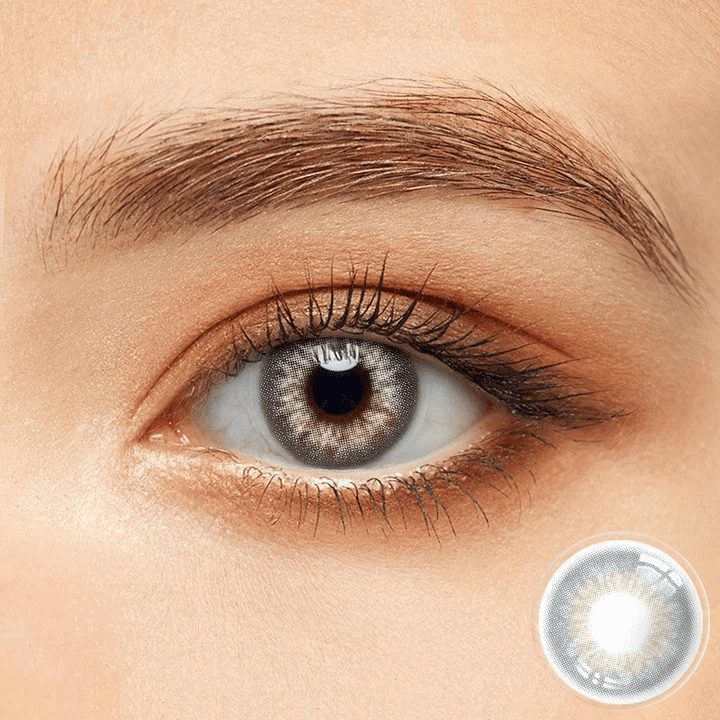
تحديد أحد الخيارات
هناك العديد من الأشكال المختلفة لهذا المنتج. يمكن اختيار الخيارات على صفحة المنتج
أُوكَازيُون
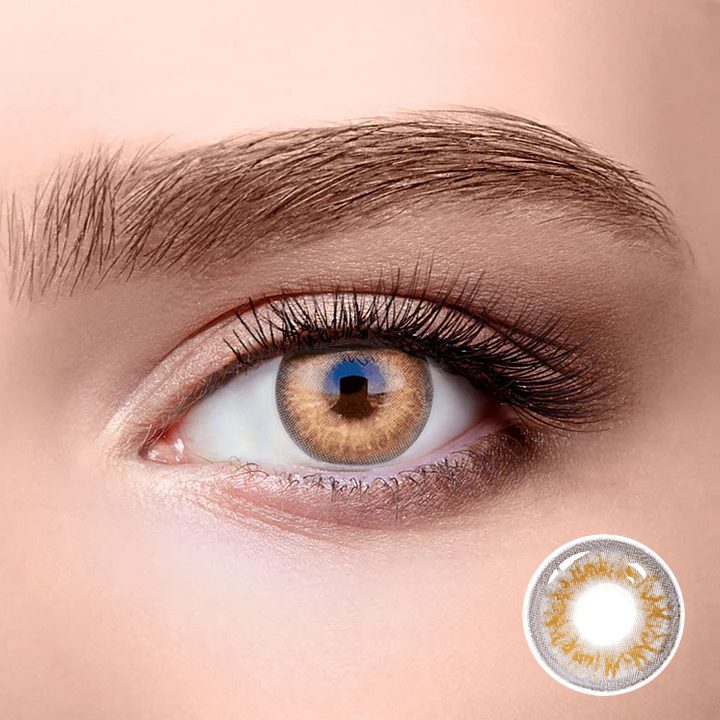
تحديد أحد الخيارات
هناك العديد من الأشكال المختلفة لهذا المنتج. يمكن اختيار الخيارات على صفحة المنتج
اعتبارات لمرتدي العدسات اللاصقة المصابين بالاستجماتيزم
- فحص العين: إذا كنت تعاني من اللابؤرية وترغب في ارتداء العدسات اللاصقة، فمن الضروري تحديد موعد لفحص شامل للعين مع أخصائي رعاية العيون. سيحدد هذا الفحص شدة الاستجماتيزم لديك والوصفة الطبية الأنسب للعدسات اللاصقة لاحتياجاتك.
- دقة الوصفة الطبية: تُعد دقة الوصفة الطبية والتركيب أمرًا بالغ الأهمية لتصحيح اللابؤرية. يجب أن تتماشى العدسات الحيدية بشكل صحيح مع الانحناء غير المنتظم للعين. سيأخذ مقدم رعاية العيون الخاص بك قياسات دقيقة لضمان الملاءمة المناسبة.
- الراحة والتكيف: قد يمر بعض الأشخاص الذين يعانون من اللابؤرية بفترة تكيف قصيرة عند الانتقال إلى العدسات اللاصقة. قد يستغرق الأمر بعض الوقت للتعود على ملمس العدسات ووضوح الرؤية التي توفرها.
- الصيانة والعناية: النظافة السليمة للعدسات اللاصقة أمر بالغ الأهمية لتجنب المضاعفات والعدوى. اتبع تعليمات أخصائي العناية بالعين الخاصة بك لتنظيف العدسات وتعقيمها واستبدالها.
- المتابعة المنتظمة: حافظ على مواعيد المتابعة المنتظمة لمراقبة صحة عينيك وأداء عدساتك اللاصقة.
إذا كنت تعاني من اللابؤرية، يمكنك ارتداء العدسات اللاصقة المصممة لتصحيح هذه الحالة الشائعة في الرؤية. يمكن أن توفر العدسات اللاصقة الحيدية وعدسات RGP رؤية واضحة ومستقرة، ولكن من الضروري العمل عن كثب مع أخصائي رعاية العيون لضمان الملاءمة والوصفة الطبية المناسبة. أتاحت التطورات في تكنولوجيا العدسات اللاصقة للعديد من الأشخاص الذين يعانون من اللابؤرية الاستجماتيزم الاستمتاع براحة وفوائد ارتداء العدسات اللاصقة مع الحفاظ على رؤية واضحة ومريحة.
الإفراط في ارتداء العدسات اللاصقة: علاج احمرار العين
توفر العدسات اللاصقة الراحة والرؤية الواضحة، لكن الإفراط في ارتدائها يمكن أن يؤدي إلى مشكلة شائعة تعرف باسم "احمرار العين". يمكن أن يكون احمرار العينين مزعجاً وقد يشير إلى مشكلة أكثر خطورة إذا لم يتم التعامل معها على الفور. نناقش أسباب احمرار العين من الإفراط في ارتداء العدسات اللاصقة ونقدم إرشادات حول العلاج والوقاية.
ماذا يحدث إذا ارتديت العدسات اللاصقة لفترة طويلة جداً؟ حسنًا، يحذر أطباء العيون من شيء يسمى متلازمة الإفراط في ارتداء العدسات اللاصقة. كما ترى، عندما ترتدي العدسات اللاصقة لفترة طويلة من الزمن، لا تحصل عيناك على ما يكفي من الأكسجين. يمكن أن يختلف الإطار الزمني المحدد قبل حدوث ذلك تبعاً لنوع العدسات وسماكتها وكذلك طريقة استخدامك لها.
معظم العدسات المتوفرة اليوم ناعمة ومصممة للسماح بمرور الكثير من الأكسجين، مما يسمح لك بارتدائها لفترة أطول. ولكن حتى هذه العدسات لها حدودها. عندما تتجاوز وقت الارتداء الموصى به، مثل النوم بالعدسات اللاصقة أو قضاء أيام دون خلعها، فإنك تخاطر بالإصابة بمتلازمة الإفراط في ارتداء العدسات اللاصقة. لذا اعتنِ بعينيك والتزم بالإرشادات!
متلازمة الإفراط في ارتداء العدسات اللاصقة هي حالة تحدث غالباً لدى الأفراد الذين يرتدون عدساتهم اللاصقة لفترات طويلة، مثل أثناء النوم. ويمكن أن تتطور أيضاً إذا تم استخدام نفس زوج العدسات اللاصقة لفترة أطول من العمر الافتراضي الموصى به دون استبدالها بانتظام. تشمل الأعراض النموذجية لمتلازمة الإفراط في ارتداء العدسات اللاصقة ألم العين والاحمرار والدموع الزائدة واحتمال تشوش الرؤية والحساسية للضوء. إذا لم يتم إزالة العدسات اللاصقة على الفور، فقد تصبح العدسات اللاصقة عالقة ويصبح استخراجها أكثر صعوبة تدريجياً.
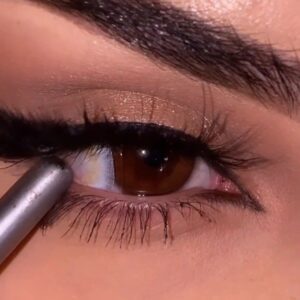
أسباب احمرار العين من الإفراط في ارتداء العدسات اللاصقة
- نقص الأكسجين: يمكن أن يؤدي الإفراط في ارتداء العدسات اللاصقة إلى حرمان قرنيتك من الأكسجين الذي تحتاجه لتبقى بصحة جيدة. عندما لا تتلقى القرنية ما يكفي من الأكسجين، يمكن أن تتهيج وتظهر باللون الأحمر.
- الجفاف: يمكن أن تتسبب العدسات اللاصقة في انخفاض إنتاج الدموع، مما يؤدي إلى جفاف العينين. يمكن أن يسبب جفاف العينين احمرارًا وانزعاجًا وشعورًا بالحكة.
- العدوى البكتيرية أو الفطرية: يمكن أن يزيد ارتداء العدسات اللاصقة أو تنظيفها بشكل غير صحيح من خطر الإصابة بالعدوى البكتيرية أو الفطرية. يمكن أن تسبب هذه العدوى الاحمرار والألم والحساسية للضوء.
- الحساسية: قد يصاب بعض الأفراد بالحساسية تجاه المواد الموجودة في العدسات اللاصقة أو المحاليل المستخدمة في التنظيف والتعقيم. يمكن أن تؤدي ردود الفعل التحسسية إلى احمرار وحكة في العينين.
علاج احمرار العينين الناتج عن الإفراط في ارتداء العدسات اللاصقة
- التوقف عن استخدام العدسات اللاصقة: إذا كانت عيناك حمراء ومتهيجة، فالخطوة الأولى هي إزالة العدسات اللاصقة على الفور. اسمح لعينيك بالتنفس والتعافي بدون العدسات.
- استخدم الدموع الاصطناعية: يمكن أن تساعد قطرات العين المرطبة (الدموع الاصطناعية) في تخفيف الجفاف وتهدئة احمرار العينين. تأكد من اختيار القطرات الخالية من المواد الحافظة التي يوصي بها أخصائي العناية بالعين.
- الكمادات الدافئة: يمكن أن يساعد وضع كمادة دافئة على الجفون المغلقة في تخفيف الانزعاج وتقليل الاحمرار. كن لطيفاً وتجنب الضغط المفرط.
- تجنب العدسات اللاصقة حتى تتحسن الأعراض: امتنع عن ارتداء العدسات اللاصقة حتى تعود عيناك إلى حالتها الطبيعية والصحية. قد يستغرق الأمر يومًا أو أكثر حتى يهدأ الاحمرار.
- استشر اختصاصي العناية بالعين: إذا استمرت الأعراض أو تفاقمت بعد اتخاذ هذه الخطوات الأولية، استشر اختصاصي العناية بالعين. يمكنهم تقييم صحة عينيك والتوصية بالعلاج المناسب وتقديم الإرشادات بشأن استخدام العدسات اللاصقة في المستقبل.
منع احمرار العينين من الإفراط في ارتداء العدسات اللاصقة
اتبع إرشادات الارتداء: التزم بمواعيد ارتداء العدسات اللاصقة الموصوفة لك واستبدل عدساتك اللاصقة حسب توصية أخصائي العناية بالعين.
النظافة السليمة: اغسل يديك جيدًا قبل التعامل مع العدسات. نظف عدساتك وطهرها واحفظها حسب التعليمات لمنع العدوى.
الحد من الوقت الذي تقضيه أمام الشاشة: يمكن أن يساهم الوقت المفرط أمام الشاشة، خاصةً على الأجهزة الرقمية، في جفاف العينين. اتبع قاعدة 20-20-20: خذ استراحة لمدة 20 ثانية كل 20 دقيقة للنظر إلى شيء ما على بعد 20 قدمًا.
حافظ على رطوبة جسمك: اشرب الكثير من الماء للحفاظ على الترطيب العام، مما يساعد على منع جفاف العينين.
فحوصات العين المنتظمة: حدد موعدًا لفحوصات العين المنتظمة لمراقبة صحة عينيك والتأكد من تحديث وصفة العدسات اللاصقة الخاصة بك.
يمكن أن تكون العيون الحمراء الناتجة عن الإفراط في ارتداء العدسات اللاصقة مزعجة وعلامة على وجود مشاكل كامنة. تُعد العناية المناسبة والنظافة والالتزام بإرشادات ارتداء العدسات اللاصقة من الأمور الحاسمة للوقاية من هذه المشكلة. إذا واجهت احمراراً أو انزعاجاً، اتخذ إجراءً فورياً بالتوقف عن استخدام العدسات والبحث عن العلاج المناسب. يجب أن تكون صحة عينيك دائماً أولوية عند استخدام العدسات اللاصقة.
أُوكَازيُون
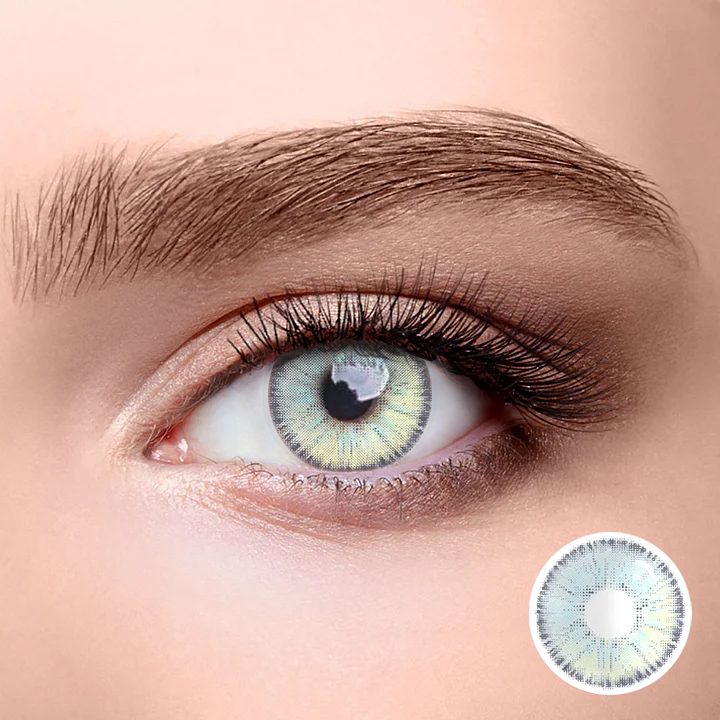
تحديد أحد الخيارات
هناك العديد من الأشكال المختلفة لهذا المنتج. يمكن اختيار الخيارات على صفحة المنتج
أنجيليس أوربان بلو
تم التقييم 5.00 من 5
أُوكَازيُون
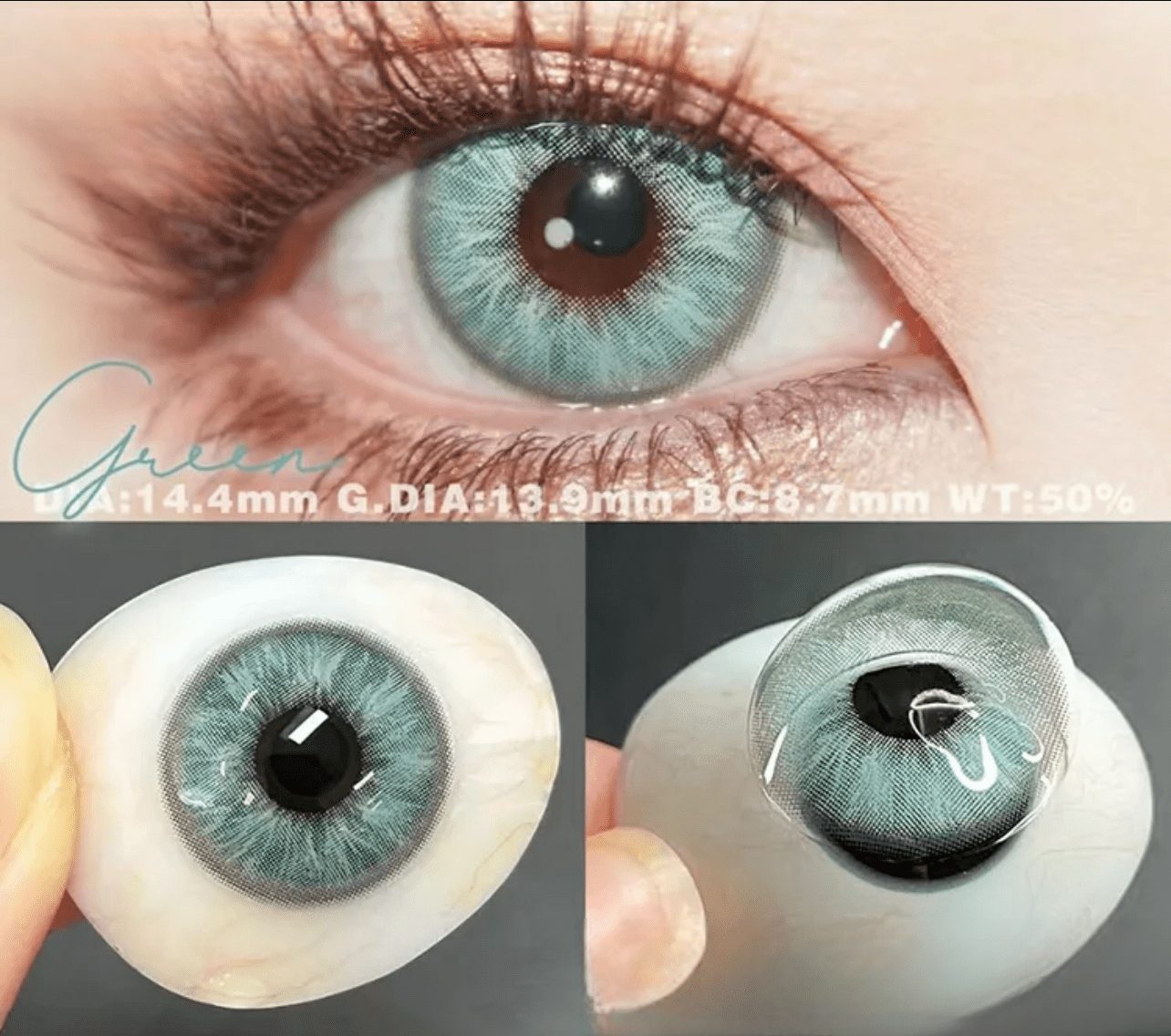
تحديد أحد الخيارات
هناك العديد من الأشكال المختلفة لهذا المنتج. يمكن اختيار الخيارات على صفحة المنتج
الفنان الذي لا ينام (يوميًا - 10 قطع)
تم التقييم 5.00 من 5
أُوكَازيُون
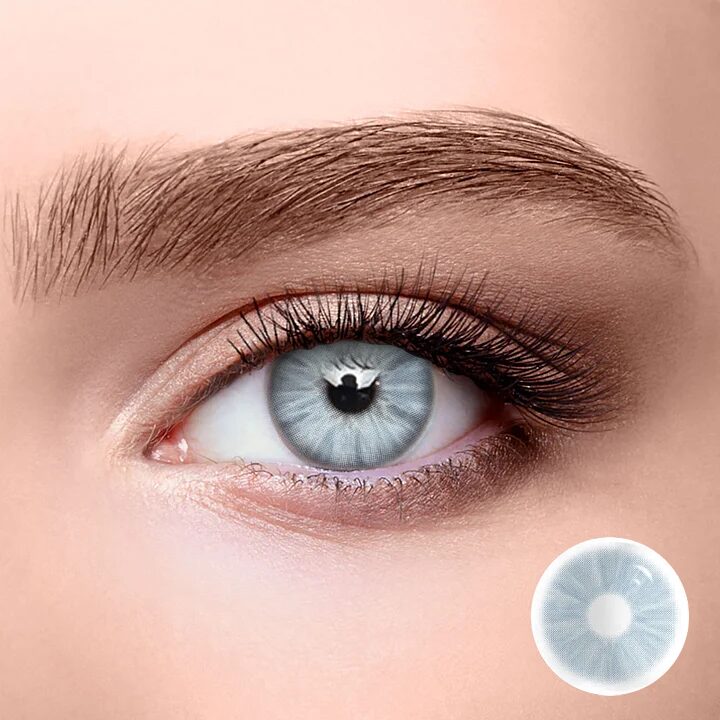
تحديد أحد الخيارات
هناك العديد من الأشكال المختلفة لهذا المنتج. يمكن اختيار الخيارات على صفحة المنتج
أُوكَازيُون
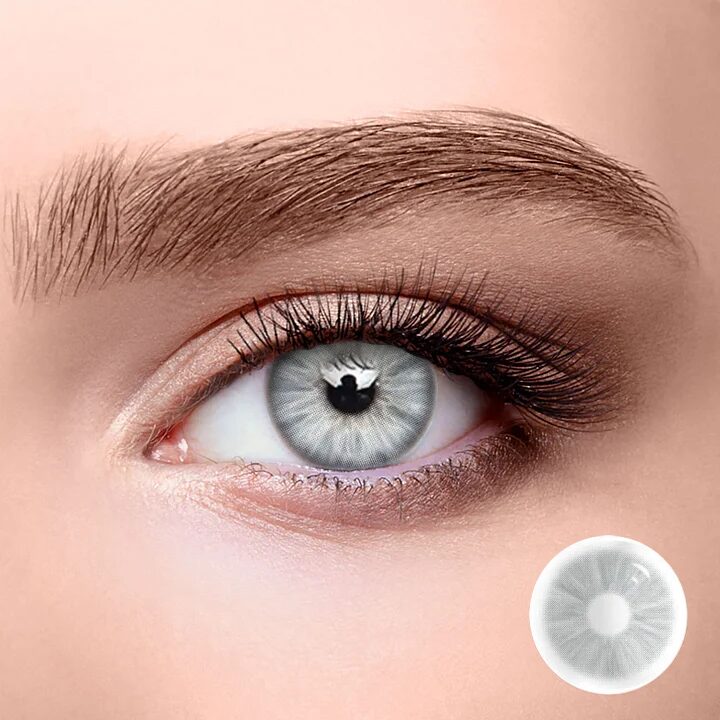
تحديد أحد الخيارات
هناك العديد من الأشكال المختلفة لهذا المنتج. يمكن اختيار الخيارات على صفحة المنتج
موسم الحساسية والعدسات اللاصقة: نصائح لارتداء مريح
في الوقت الحالي، من المحتمل أن يؤثر موسم الحساسية على العديد من الأفراد، بمن فيهم أنت. تشير الدراسات الحديثة إلى أن ما يقرب من 22 مليون أمريكي يعانون من الحساسية الموسمية. ومع ذلك، فأنت لست وحدك في هذا الصراع. فمع المعرفة الجماعية والتقدم التكنولوجي، تتوفر حلول فعالة بفضل المعرفة الجماعية والتقدم التكنولوجي. قد يمثل موسم الحساسية تحدياً لمرتدي العدسات اللاصقة. غالباً ما تجلب الحساسية الموسمية أعراضاً مثل الحكة والاحمرار والعيون الدامعة، مما قد يجعل ارتداء العدسات اللاصقة غير مريح. ومع ذلك، مع بعض الاحتياطات والتعديلات، لا يزال بإمكانك الاستمتاع برؤية واضحة وارتداء العدسات اللاصقة بشكل مريح خلال موسم الحساسية.
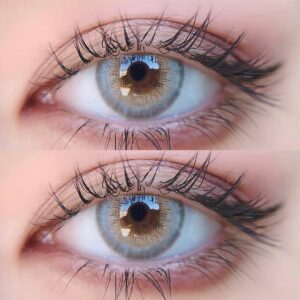
10 نصائح لـ التعامل مع الحساسية والعدسات اللاصقة
إذا كنت من مرتدي العدسات اللاصقة، فإن التعامل مع الحساسية خلال موسم الحساسية يتطلب مزيداً من الاهتمام والعناية لضمان بقاء عينيك مرتاحتين وصحيتين. فيما يلي بعض النصائح لمساعدتك في التعامل مع هذه الفترة الصعبة:
- استشر أخصائي العناية بالعين الخاص بك:
قبل أن يبدأ موسم الحساسية، حدد موعدًا مع أخصائي العناية بالعين. يمكنهم تقييم صحة عينيك وتقييم مدى ملاءمة عدساتك اللاصقة والتوصية باستراتيجيات لتقليل الانزعاج المرتبط بالحساسية.
- التحوّل إلى العدسات التي تُستخدم لمرة واحدة يومياً:
ضع في اعتبارك استخدام العدسات اللاصقة التي تستخدم لمرة واحدة يوميًا خلال موسم الحساسية. يتم التخلص من هذه العدسات يومياً، مما يقلل من تراكم المواد المسببة للحساسية على سطح العدسة. بالإضافة إلى ذلك، فهي تلغي الحاجة إلى التنظيف والتطهير، وهو ما قد يكون مفيداً إذا كانت عيناك حساسة بشكل خاص خلال موسم الحساسية.
- الحفاظ على النظافة الصحية السليمة:
إذا استمررت في استخدام العدسات القابلة لإعادة الاستخدام، فاحرص على اتباع ممارسات النظافة الصارمة. اغسل يديك جيدًا قبل التعامل مع عدساتك واتبع تعليمات مزود العناية بالعين الخاصة بك لتنظيف العدسات وتعقيمها وتخزينها.
- استخدمي الدموع الاصطناعية الخالية من المواد الحافظة:
يمكن أن تساعد قطرات العين المرطبة الخالية من المواد الحافظة (الدموع الاصطناعية) على تهدئة الجفاف وغسل المواد المسببة للحساسية من عينيك. احملها معك واستخدمها حسب الحاجة للحفاظ على الراحة طوال اليوم.
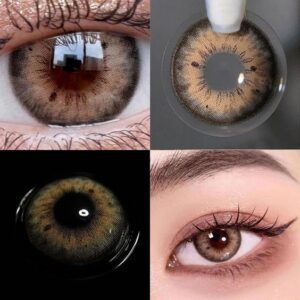
- أبقِ النوافذ مغلقة:
خلال مواسم ارتفاع حبوب اللقاح، أبقِ النوافذ مغلقة في المنزل وفي سيارتك لتقليل التعرض لمسببات الحساسية الخارجية.
- استخدام أدوية الحساسية:
يمكن أن تساعد أدوية الحساسية التي تُصرف دون وصفة طبية أو بوصفة طبية في السيطرة على أعراض الحساسية. استشر طبيبك أو أخصائي الحساسية لمعرفة أفضل خيارات العلاج بناءً على احتياجاتك الخاصة.
- تجنبي فرك عينيك:
يمكن أن يؤدي فرك عينيك إلى تفاقم أعراض الحساسية ومن المحتمل أن يؤدي إلى خلع العدسات اللاصقة. وبدلاً من ذلك، ربّت على عينيك برفق إذا شعرت بالحكة أو الدمع.
- ضع في اعتبارك قطرات حساسية العين:
يمكن أن توفر قطرات العين المضادة للهيستامين التي تُصرف بوصفة طبية أو بدون وصفة طبية تخفيفًا مستهدفًا لأعراض حساسية العين. استشر مزود العناية بالعين للحصول على توصيات.
- تقليل التعرض للخارج:
قلل من الوقت الذي تقضيه في الهواء الطلق، خاصةً في أوقات ذروة حبوب اللقاح، لتقليل التعرض لمسببات الحساسية.
- اتبع النصيحة المهنية:
اتبع دائمًا إرشادات وتوصيات مقدم رعاية العيون وطبيب الحساسية. فبإمكانهم وضع خطة مصممة خصيصًا للتعامل مع الحساسية الخاصة بك وضمان أفضل رعاية لعينيك.
لا يجب أن تتسبب الحساسية الموسمية في تعطيل ارتداء العدسات اللاصقة خلال موسم الحساسية. من خلال اتباع هذه النصائح والحفاظ على النظافة الجيدة وطلب المشورة المتخصصة عند الحاجة، يمكنك الاستمتاع برؤية واضحة وراحة أثناء التحكم في أعراض الحساسية المرتبطة بالعين.



 ذهب
ذهب


